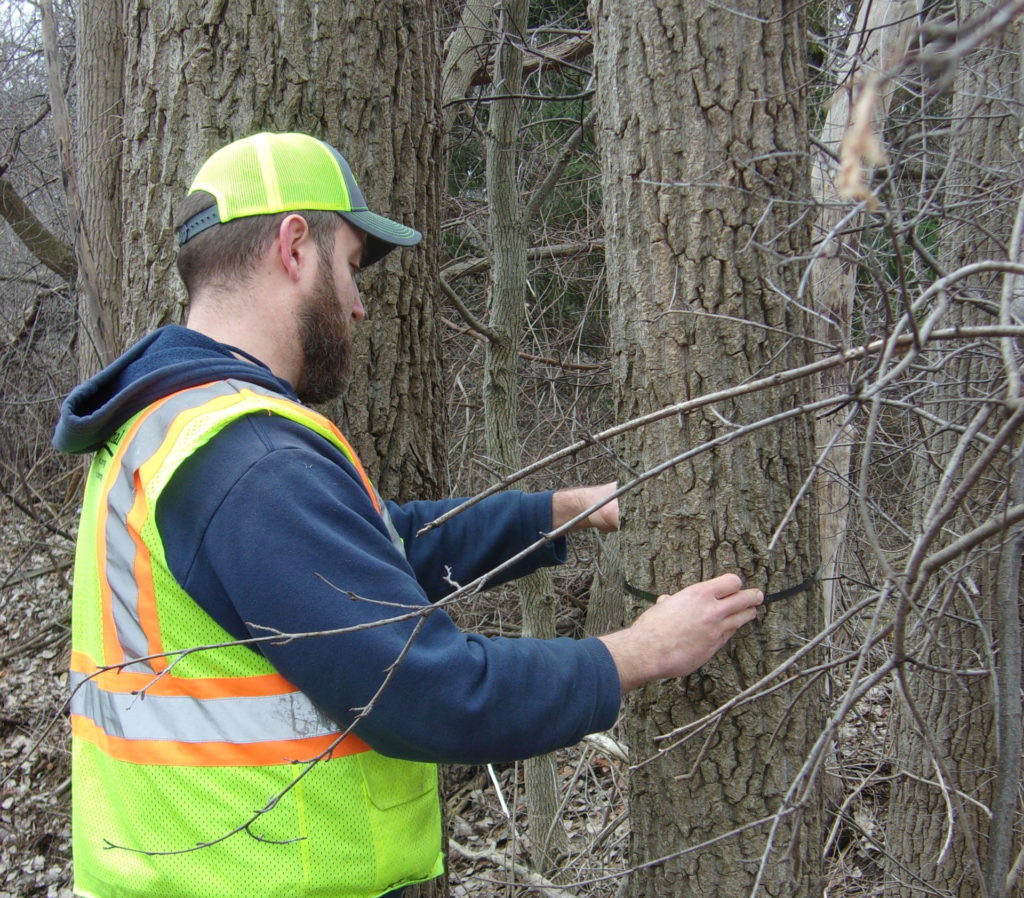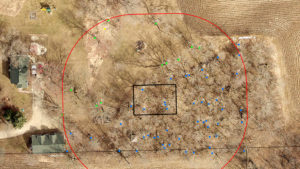Determine if Your Property Needs a Tree Survey
There are a number of reasons why a tree inventory may be necessary. This determination can best be made by a professional depending on the type of project and whether there are local ordinances with which you must comply. In many cases, a tree survey is necessary to bring your project into compliance with a municipal or county ordinance. For example, one of our clients, the City of Franklin, Wisconsin, has a Natural Resources Protection ordinance that requires the protection of both young and mature woodlands depending on their diameter.
Several reasons that you may be required to complete a tree inventory include the following:
- Your project is located in a forested area and/or an environmental corridor that is protected by a local unit of government.
- Some ordinances specify that tree removals require a woodland restoration plan.
- Trees with diseases such as Emerald Ash Borer Disease must be identified, as they pose a threat to safety in public areas.
- The collection of baseline data is needed for habitat restoration purposes.
- You wish to inventory and map the trees on your property.

When You Should Plan Your Tree Survey
So, when is the best time of the year to complete a tree inventory, and how is the work completed? raSmith ecologists can complete a tree survey at any time of the year, as tree species are identified not only by their leaves, but also by their bark, twigs, and buds. We measure trees at breast height using a diameter tape and locate them using GPS technology or survey equipment. Maps are then produced for you, showing the size, location, and species of each tree within the project area.

Portion of a tree survey map in a residential location.
If you are looking for financial assistance for your project, grant funding may be available for your project through various organizations such as the Wisconsin Department of Natural Resources (WDNR) Urban Forestry grant program, the U.S. Forest Service Landscape Scale Restoration Grants, and others.
Contact Us
If you need a tree inventory or know someone who does, please contact our ecologist, Erica Pergande, at erica.pergande@rasmith.com or (262) 317-3389. We have completed numerous tree inventory projects for both the public and private sectors and can advise you on how to best handle your project and comply with local ordinance requirements, if applicable.
We can also evaluate the potential for your project to receive grant funding, make recommendations, and assist with grant writing.
